Monogram’s Mystery Engine
I have a certain fondness for radial engines. This is understandable, seeing as how most of my 2700 hours was spent behind or alongside one or more of these mechanical masterpieces of aeronautical technology. This prompted me to purchase several kits of the radial engine. I wanted to build Revell's Visible 1340 “Wasp” but the prices are astronomical while kit conditions are questionable. Owners of these kits want scale prices to match the engine.
However, I did purchase a copy at about half the going rate, only to find many small pieces missing. I returned the 1340 and purchased a much more affordable kit, Monogram's memorable Wright 1820 “Cyclone.” As I have time in the “Goony bird” with two P&W 1830s droning just outside, I felt the 3's 1820 sister seemed a reasonable example for the effort. (Nothing is more comforting to the ear when one climbs into the crew bunk for a nap. The vibration is like having been swallowed by a purring cat)
This time the kit was intact, so I began construction. The first unusual thing I noted was the single magneto ignition. Odd, I had never seen such a setup on any aircraft engine I had worked on, all had dual magnetos. Then I noticed the cap on the propeller governor mounting pad. Curiouser and curiouser yet, I thought.
Of course, these should have been obvious clues as to what I was dealing with. I went on to research the engine, looking for reference photos for painting. The box-top showed an attractive aluminum finish, but a small Revell/Monogram advertising insert showed a gloss black cylinder version that looked much more like the 1820s I had seen (but never worked on).
Yet, when I began looking on the web, I could not find a single example of Monogram's engine. All the engines had dual ignition.
Later, while looking for an entirely unrelated subject, quite by accident I ran across a full scale radial for a very reasonable price. I went to look - low and behold, there was Monogram's engine configuration detail, sans cooling baffles; but the listing was for a Lycoming not a Wright.
The real clue was the photo that showed a fan assembly included in the sale.
Here is the description: Engine in stand, has complete exhaust manifold, includes counterweight. Engine is running with a good core, but due for overhaul. Running core value is $12,000.00. Air Force or Bauer model R-1820-82. Contract # AF33-038-21916. Stromberg Injection Carb, S/N #856180. Model PD12K18.
Single mag, cooling fan - that clinched it; this was not an aircraft engine, but a non-airworthy, ground power unit contracted out by the government to a company called “Bauer.” I'm not sure where the listing for a Lycoming came from, unless Bauer is the mod. Monogram simply slapped on a three bladed Hamilton Standard Hydromatic “test club” and released it as a Wright radial.
Here is the owner's reply to my query about the engine: The Lycoming aircraft engine in the ad is an aircraft engine and it has the dual Magneto system, it is R 1820 just like the ad says. The fan as you call it is unrelated, could be used as a counterweight for running the engine in an engine stand. And yes Lycoming built radial aircraft engines, thank you, K_____
Watson! How often have I said when you have eliminated the impossible, whatever remains, however improbable, must be the truth?
Apparently, the photos in the ad are unrelated to the actual engine on the auction block, as the single ignition system is as readily apparent in the photos as it was on the model. I know the fan in the photo is an adjustable, blade fan and not a test club for ground testing aircraft engines. What's more, the diameter of the fan is roughly the same size as the engine diameter in the photos.
The fact I had spent time, money and effort building a ground power unit severely cooled my ardor for kit radials. I briefly considered modifying the engine to an aircraft configuration, but quickly figured it wasn‘t worth the effort. However, since I had gone this far I decided to press on with the charade and complete the kit as configured. Here are the results of my latest diorama:
And you thought you had seen detail in a scale model. Check the weathering on this baby! Safety wiring was the most difficult part to reproduce. Note the paint scheme matching the box top display.
Fooled ya, didn't I? I can't count how many times looking at working 1/72 scale Dzus fasteners have driven me crazy to the point of almost giving up the modeling sport. Okay here is the model, compare with the above photos. Seeing as this is not an aircraft engine, I left off the Hydromatic stub propeller.
We do not build models, we recreate history in three dimensions. We're three dimensional historians.

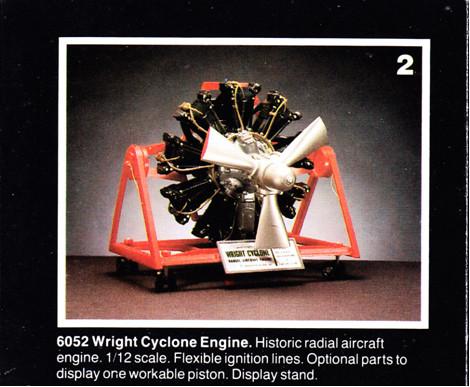
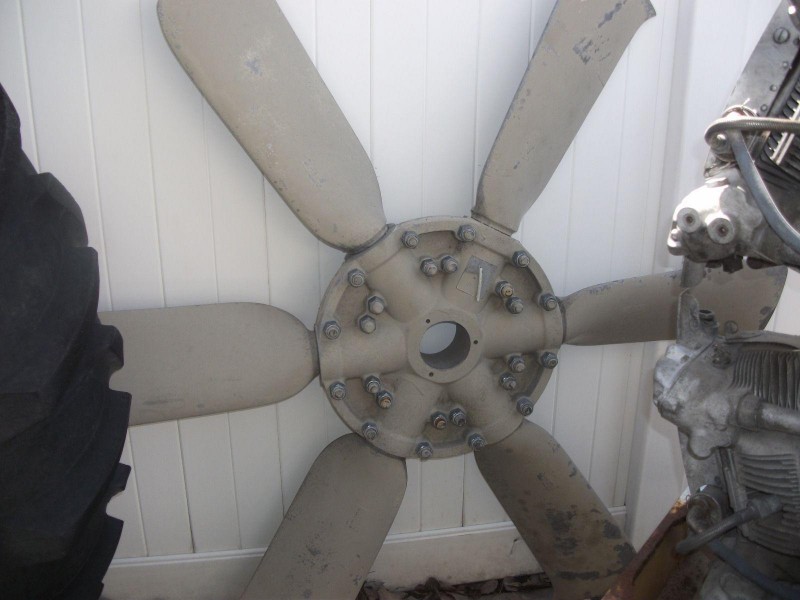
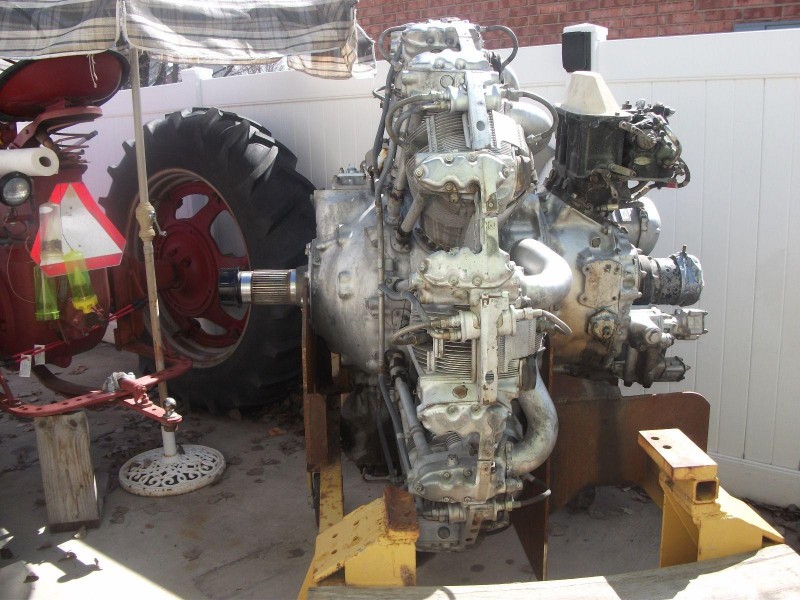


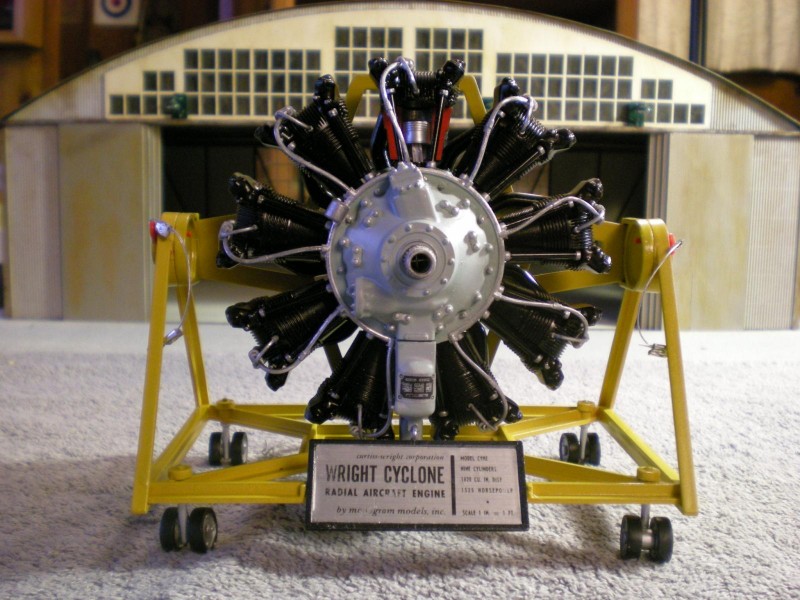
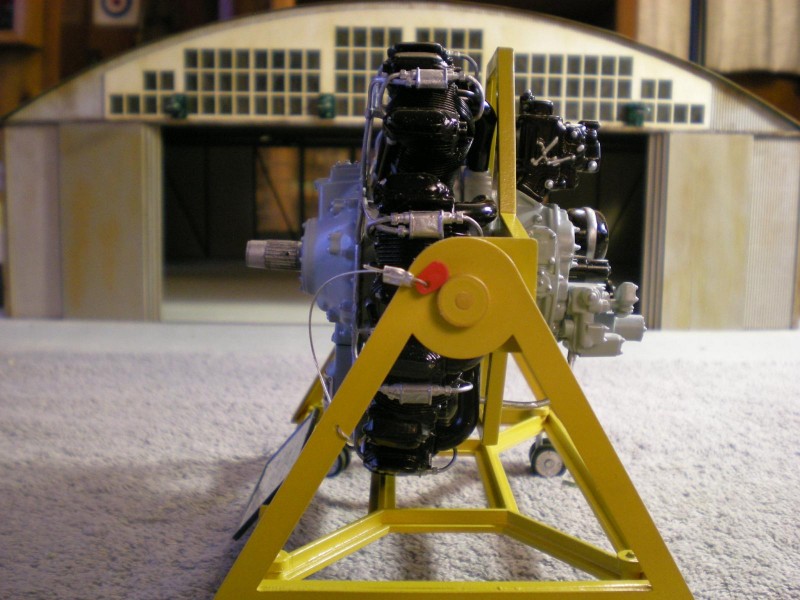

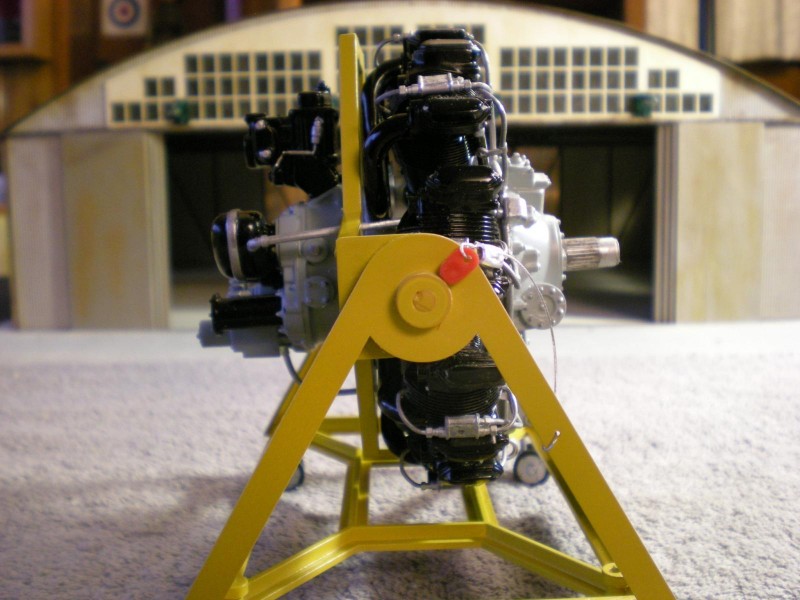
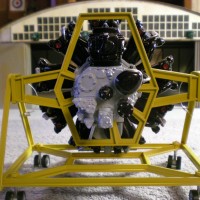
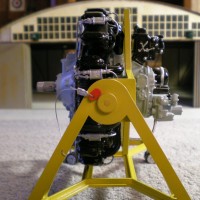
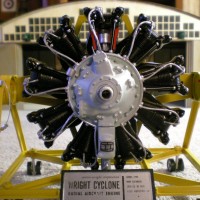

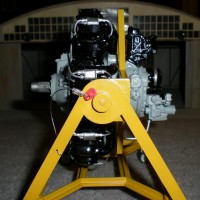
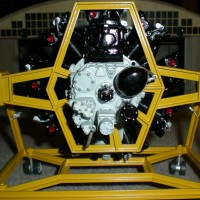
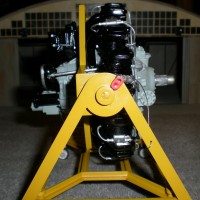
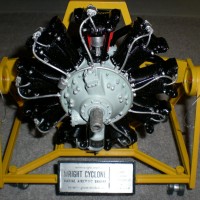
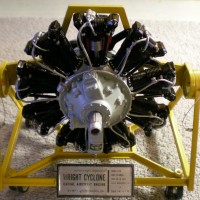

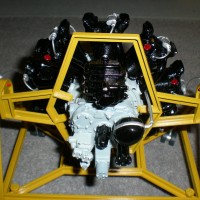
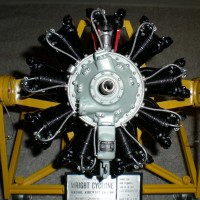
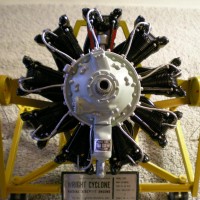
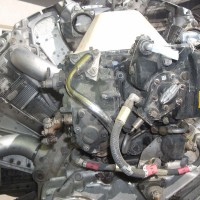
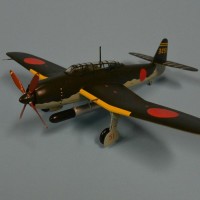
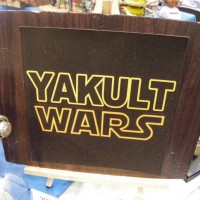
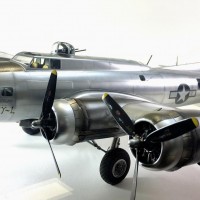
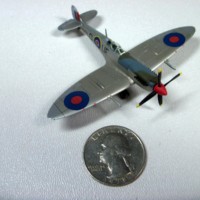
Great sleuthing.
Fantastic work there, my friend...outstanding build!
Gosh... a real Wright Cyclone! Top notch work!
Fantastic, sir. A terrific piece, and an even better piece of work.
I wonder if the engine was a tank engine for Sherman Tanks. The cooling fan has been removed and the engine mounting has been remove? Also, Caterpillar converted some of these air cooled engines into Diesels which included two starters and it would seem that StudaBaker also, produced Wright engines. Although, I believe the engines used for the Sherman's had dual ignition.
https://airandspace.si.edu/multimedia-gallery/wright-cyclone-r-1820-97-studebaker-radial-9-engine
I know the Sherman used a continental 220 clone as these have come up for sale at considerably lower prices than airworthy versions. Of course none of the part numbers match, making the parts unairworthy as well.
Sho 'nuff -
The end result is a great build!
G, I too was thinking a tank engine when you mentioned the single mag. Interesting how things like this kit come about, given that there are thousands of these engines lying around, though not necessarily airworthy.
I have to admit to not being terribly fond of Wright engines. They are generally more powerful than most of their P&W counterparts, but that comes with much lower reliability and if you've ever worked on an R-3350, a penchant for either consuming or leaking oil in copious quantities. I guess my prejudice started early when my powerplant instructor in A&P school stood in front of us one day, explaining the inner workings of a cutaway radial that just happened to be an -1820, and stated that he could have all the valves adjusted on a P&W R-1830 before we could get the valve covers off a Wright. And he was absolutely correct!
My father started his career flying for the airlines in the late fifties back when they had radial engines on the airliners. As a kid I'd ask questions like when do they change the oil on these things and he'd say things like they didn't. The mechanics would add oil and the engine would throw the rest.
Can you image blowing a Jug (leaking) on the lower half of the engine in a tank? That would be a PITA with a engine change. Or a fire hazard ...for a Sherman in the field during combat... another reason to take meds.
The fifty gallon oil drum was a standard feature in the hanger when operating even smaller radials. Seventy weight was a common viscosity that I used in my oil burning Harley as well. Oil by the quart is just far too expensive for radial engines.
And yes, they do oil changes on radials at specific time intervals. But some of the more tired radials went through a complete oil change volume before the timed event came due. I would not doubt that under certain working conditions it might have been true mechanics simply added oil until the engine's TBO came due.
With the 1340's fuel consumption figures, (40 gph as I remember) we used auto gas from Mexico in our South Texas Ag-aircraft as it was thirty cents a gallon, opposed to the multi dollar, av-gas variety. Auto gas works fine at altitudes below 10'000 feet but can create vapor lock in rarer atmospheric conditions. Witness the fact the auto gas STC was nothing more than a label one pasted on the airplane.
One of the problems with radials were the special tools required for maintenance. While the shop would often maintain a set of tools specific to certain radials, we were responsible for supplying the more common shop variety used for most the flat opposed work, even tools like the special cylinder base wrenches required for those engines.
Of course the problem with tools for the radial engine was due to the expense, limited availability and use of those special tools. This is why, outside changing the occasional jug or doing routine maintenance, most radial work is performed in shops specializing in those engines.
More great lessons here. I love radial engines. Not because I know much about them, but because of their great sound! Of course, the beautiful roar of a Merlin passing overhead brings wonderful shivers, but the radial just growls the sound of power to me. I love it!
Fun project and post!
Engine is actually an R-1820-84. It was used in the CH-34 by the US Navy. Here's a picture of an installed one, and parts breakdown from a Navy TM on it. The parts breakdown was apparently used as the illustration for the "six basic assemblies of the Cyclone 9 engine" in the little booklet that came with the original kit.
2 attached images. Click to enlarge.
This would make sense as the cooling fan would be required for this installation what remains curious is the single ignition setup. Why would the military deem this as acceptable in a helicopter installation but not fixed wing aircraft? It would seem that dual ignition would be even more critical in a helicopter.
Thanks for the input. Always nice to gain some enlightenment on a puzzling question.
From the Monogram booklet: "To provide better ignition shielding for radio and to improve high altitude performance, the Cyclone '9' is equipped with a low-tension ignition system. The ignition harness is located on the front of the engine and carries only low-tension current. High tension coils are located on the cylinder heads with only short leads to spark plugs. Individual coils (in dual coil assemblies) for each spark plug increase engine reliability. The dual magneto is mounted on the supercharger rear cover." The engine was also used in a number of fixed wing aircraft as well.